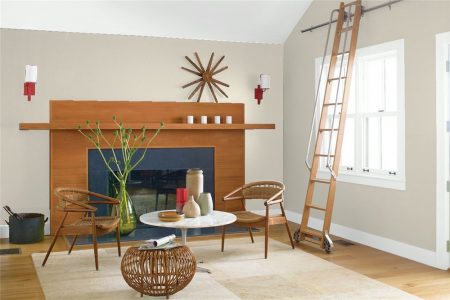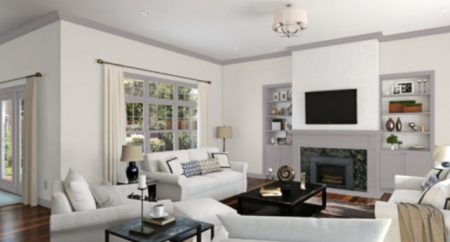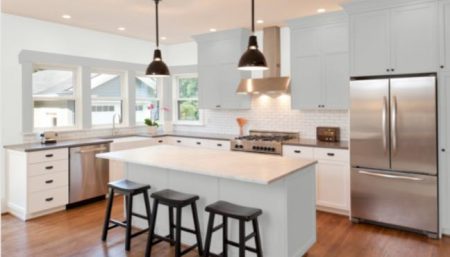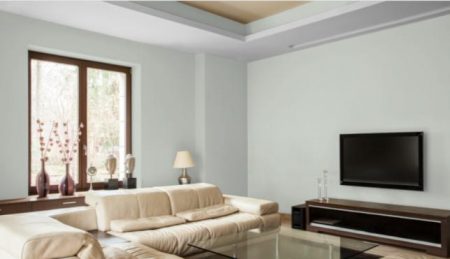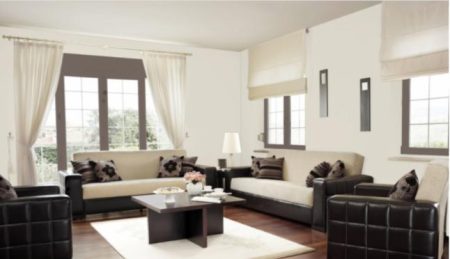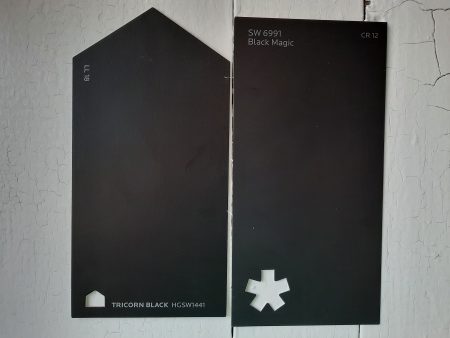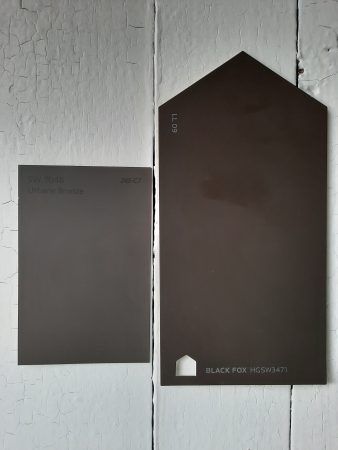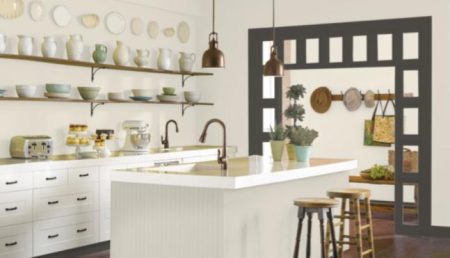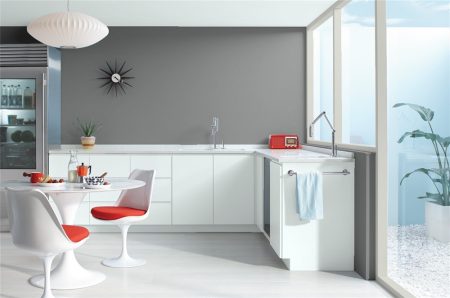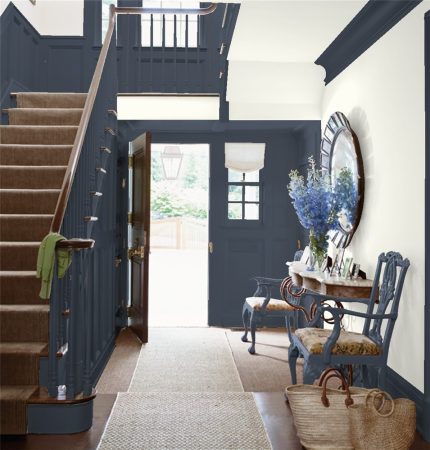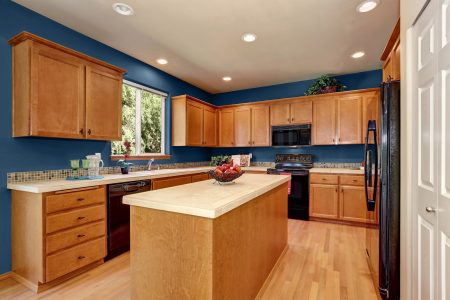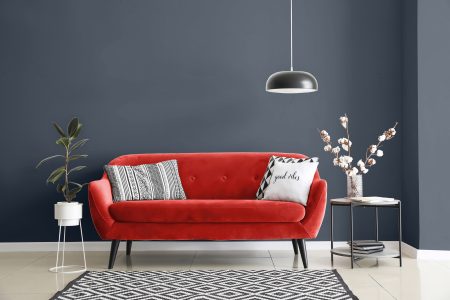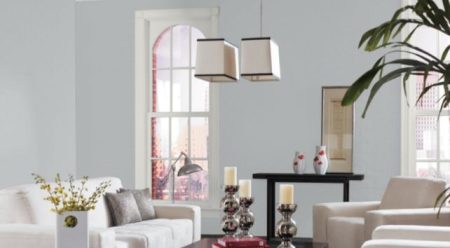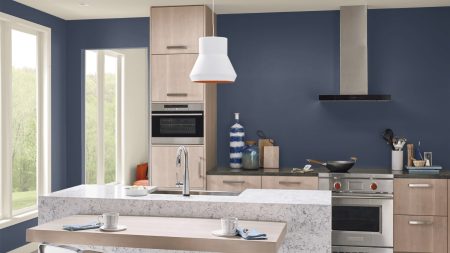Chalk Paint Vs Milk Paint? What’s the Difference?
I love the countless looks you can get from using simple milk paint and chalk paint.
If you’re on our email list you know I love finding new ways of doing things – simply and inexpensively.
The kitchen cabinets below were professionally done, but you can get the same look following some of the tips below.
It’s a long post so grab a cup of coffee or a pot of tea.
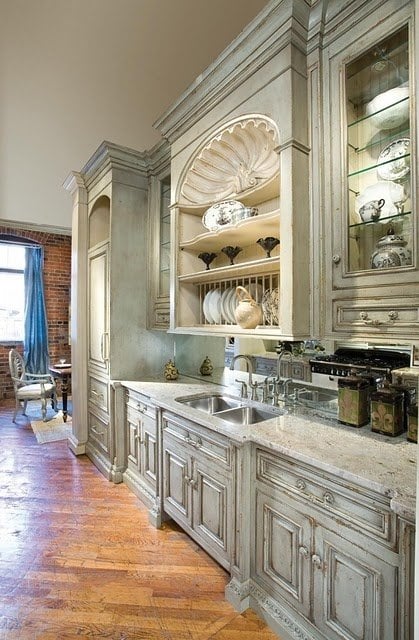
Let’s talk about milk paint and chalk paint. I’ve written about milk paint and chalk paint but everyone wants to know ‘what is the difference’? These pointers should help you decide which one is right for you.
Are Milk Paint and Chalk Paint Different?
Yes! The paints contain different ingredients and create completely different looks.
Milk paint recipes have been used for centuries. They are natural and eco-friendly. You can make your own paint following the video below or buy ready made powders and just add water.
The main ingredients are milk (or quark) and lime. They mostly come in powder form which you have to mix with water, then stir like crazy to get the lumps out.
This is part of their charm and their curse, especially if you are expecting a thicker paint consistency. You should consider using a blender if you are planning on painting large areas.
Chalk paint can be non-toxic or toxic depending on the supplier, so make sure you read the tin before buying.
Both paints give amazing paint finishes; chalk paint finishes are thicker and more consistent, whereas milk paint is often less predictable. Now, let’s look at some of the differences between the two famous paints.
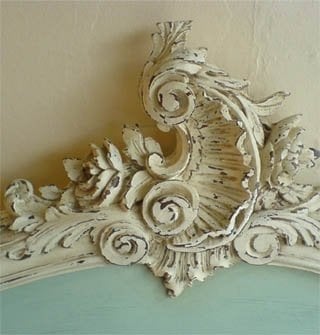
Milk Paint Powder
Buying milk paints is easy. They come in powder form, often in a small brown paper bag and super easy to carry.
Making up a milk paint recipe is easy too – just add water and stir. This means you make only what you need, along with the intensity or color.

It results in a rich, lustrous and complex finish that improves with time.’ Here are the main milk paint characteristics.
- It can be applied in a few hours.
- It’s very easy to use which is great if you are new to painting.
- It’s hard wearing.
- While it doesn’t chip like normal paint it can be scratched.
- Milk paint needs a bonding agent if you don’t want to an antique or distressed look. Without a bonding agent, it self distresses over time. If you add a bonding agent, add it to your milk paint before you start painting.
- The paint effect creates subtle differences in tone and color.
- You can mix powders and create new colors.
- Milk paint looks better as it ages. It ages beautifully, looking more polished with different levels of sheen.
- There are no fumes during use, and is safe enough to go down the kitchen sink.
- Milk paint is water based. It soaks into the wood unlike regular paint that forms a coat on the surface.
- For the best effect, use thinner, not thicker coats.
- It doesn’t require sanding your furniture which literally saves hours. That doesn’t mean you shouldn’t sand if there are rough surfaces but it’s a great start if your piece is half way decent. This really depends on the kind of effect you want but sanding is optional. See Miss Mustard Seed for more on this.
- Milk paint bonds well to fresh, raw wood or to itself.
- You can apply it with a brush, roller or sprayer. If you use a sprayer strain the milk paint; a few times.
- The first coat of paint seals, the second coat covers. Some people like one coat, others prefer two or three, especially if they are layering colors. My suggestion is to allow the first coat to dry completely, then apply the second coat.
- Milk paint can be unpredictable when it comes to distressing. You can get some amazing looks if you’re happy to experiment.
- Manufacturers recommend a one-to-one mix. Most people mix and shake it in a clean, wide mouthed jar which makes it easy to dip the brush. Shaking creates a paint full of air. Allow it to sit for an hour to allow the solids to settle.
- Stir before you start painting and regularly while you paint. When mixing use hot water (preferably filtered). This helps to dissolve any clumps, and gives you more paint and a more accurate color. Stir for a few minutes until you get a consistent liquid. Don’t panic about any clumps as they don’t show up when the paint dries.
- Some like to use a blender to get a frothy milk paint while others say its best to mix by hand.
- It’s best not to buy large quantities of milk paint powder because over time is absorbs moisture from the air and can lose its ability to bond with wood. Unused milk paint should be sealed and kept in a dry area.
- Mixed milk paint also goes bad so use it on the day it is mixed or leave it overnight in the refrigerator and use the following day.
- Hemp oil is a great top coat for milk paint. You can also use a wax or poly topcoat. Top coats are optional but they protect paint from moisture and wear and best for furniture used regularly. Oil gives your piece a darker, rich color and luster and protects it from spills.
- Milk paint is non-toxic. It doesn’t contain lead or any other nasties.
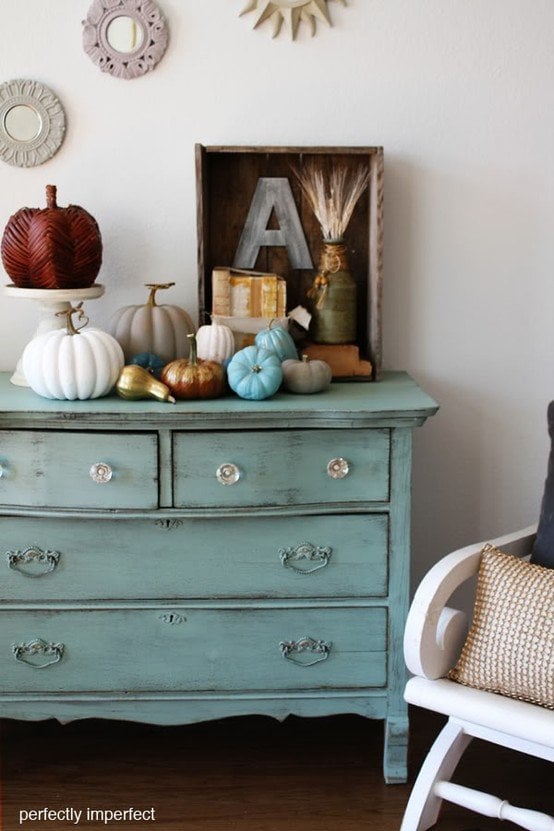
There are great tutorials all over Youtube if you want to learn more. I found this great video that also explains the differences between the two paints.
But read on for a few tricks of the trade.
Milk Paint Mixtures and Their Secrets
Milk paint starts to get interesting when you layer paint colors on top of each other to create truly unique finishes.
Professional chair makers and painters apply multiple coats of different colors such as Lexington green as the base, followed by Barn Red and topped off with Pitch Black to create a subtle tortoiseshell appearance. Try this with blues, yellows and greens or grays to get soft neutral looks.
This may sound, using three colors, but wear and tear creates a close imitation of an old paint loved by antique collectors.
The amount of water you use also changes the finishing effect and end results. If you thin your milk paint with one and a half parts water to one part paint and you’ve created a color wash. Add more water and it becomes a color stain which you can wipe off with a rag.
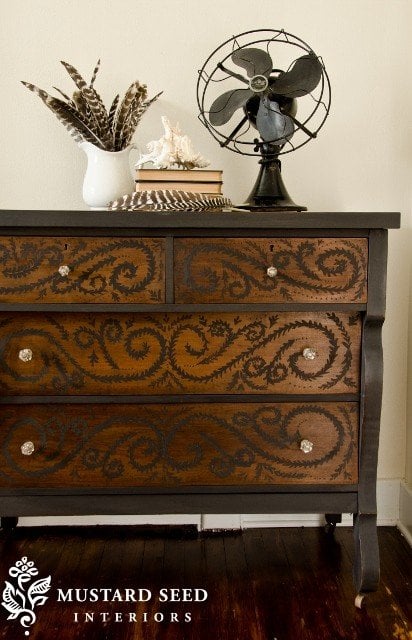
To get a smooth finish, strain the paint using a strainer or old pantyhose. Leave it unstrained and you will get a grainy, less appealing, finish.
Its a good idea to spray your furniture with water before you begin painting. This will show any residual glue or oil to be removed; preventing the milk paint from bonding with your piece.
Recipes to make your own milk paint can be found at Martha Stewart, Real Milk Paint, Esprit Cabane and a cheat’s version using acrylic paint from Craft Apple.
It is often said that milk paint has a mind of it’s own – (read ‘it looks and sticks differently on each piece.’) This is worrying for some but for most people that is part of its charm.
One of our readers pointed out Milk Paints that are 100% acrylic paints like General Finishes. They are not true Milk Paints but give a great result. “It’s never gone chippy, and gives a nice smooth finish. I’ve been so happy to be able to give new life to wood products without sanding!” Kristie O.
What is Chalk Paint?
Now let’s look at chalk paint, starting with a Annie Sloan chalk paint tutorial who coined the term ‘chalk paint’.
- Chalk paint sticks easily, which means it doesn’t need a primer, and you can leave out this step. This often depends on the chalk paint manufacturer, and its wise to test it first. This also means less worry about old oil or glue left on your piece.
- Chalk paint is versatile in creating a wide range of looks; from distressed paint, crackled paint to limewash looks. (If you like the ‘chippy’ look, milk paint is better.)
- It doesn’t need wax or a varnish coat which makes it super easy to apply. Always consider wax, oil or varnish if you want to protect your piece.
- You can mix it to create custom chalk paint colors. There is a growing selection on the market such as Annie Sloan, or Websters Chalk Paint to choose from but if you want your own colors – you might want to make them.
- You can apply chalk paint with a brush, roller or sprayer.
- Chalk paint distresses well. You can distress before or after you wax. Chalk paint comes off in a fine powder if sanded. Just sand back to get the look you want for a soft, distressed finish.
- It’s the calcium in the paint that give it a chalky finish.
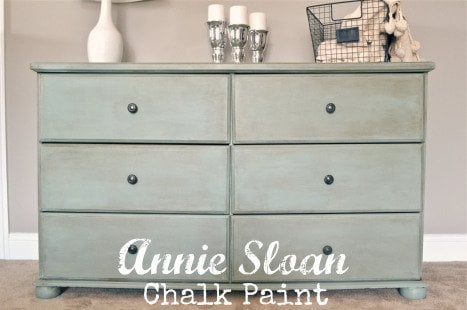
If you are doing a large area like a kitchen and the price of using a store bought chalk paint like Annie Sloan looks prohibitive (read scary!) then this simple recipe is a great way to create your own substitute and get great, hard wearing results.
Chalk Paint Recipe
- 1 Cup Latex Paint (flat)
- 1/4 Cup Calcium Carbonate
- 1/8 Cup Water
That’s the basic recipe.
Depending on the size of your kitchen, a gallon of paint could be more than enough. Make sure you get every lump out of your mixture, unless you don’t mind a streaky look.
Remember, this mixture goes a long way, and it’s inexpensive, so you can be generous. To protect your cabinets, think tough; think decking.
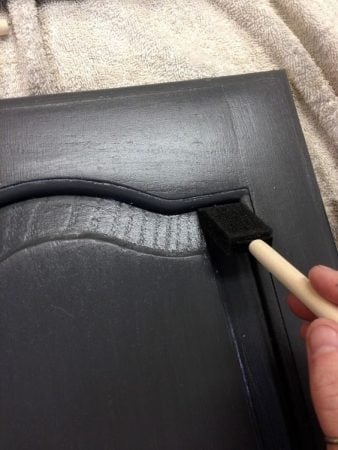
Chalk Paint Cabinets – DIY Chalk Paint
These are simple and inexpensive recipes, the cheapest is $4.00 from Elizabeth & Co. You simple use latex (acrylic) paint mixed with either grout, plaster of Paris and powdered calcium carbonate.
If you are using chalk paint for your kitchen cabinets, you should watch this video to see how they look after 2 years in a high traffic kitchen.
How to Make Chalk Paint Recipe
The video below has 4 chalk paint recipes and shows the different finishes they create. Some are easier than others.
If you have all your gear and want more painting and waxing techniques and ways to make chalk paint there are four great videos here. Even on a budget, there’s no excuse for not getting your hands on chalk paint.
Still on the fence about buying or making your own chalk paint? Homemade chalk paint is easy to make, there is no prep work on furniture, since it sticks to any surface, and its cheap!
Finish off with a wax or other sealer and you have a long lasting finish. You can age it with simple sanding or distressing and, most of the time, all you need it one coat of paint.
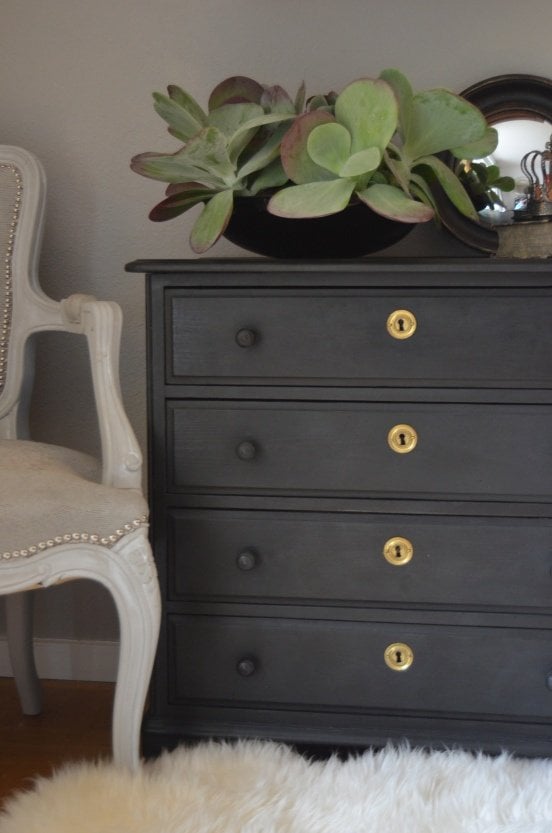
The downside is has a rough texture when dry and needs sanding between coats and may need some water added to it if it becomes clumpy. Not so hard, so far. And Annie Sloan Chalk Paint?
Again, there is no prep work, priming or sanding. There are lots of varieties of DIY chalk paint that are less expensive and very smooth and easy to work with. You can layer colors and it dries with a velvety finish. needed. Most of the time only one coat is needed and its easy to age or distress.
There is an ever expanding color range but Annie Sloan Chalk Paint is more expensive – even compared to other Chalk Paint brands, which do a similar job. Annie Sloan has a lot of chalk paint tutorials but you don’t really need them to get the process right.
The subject seems inexhaustible but I hope this answers some general questions.
